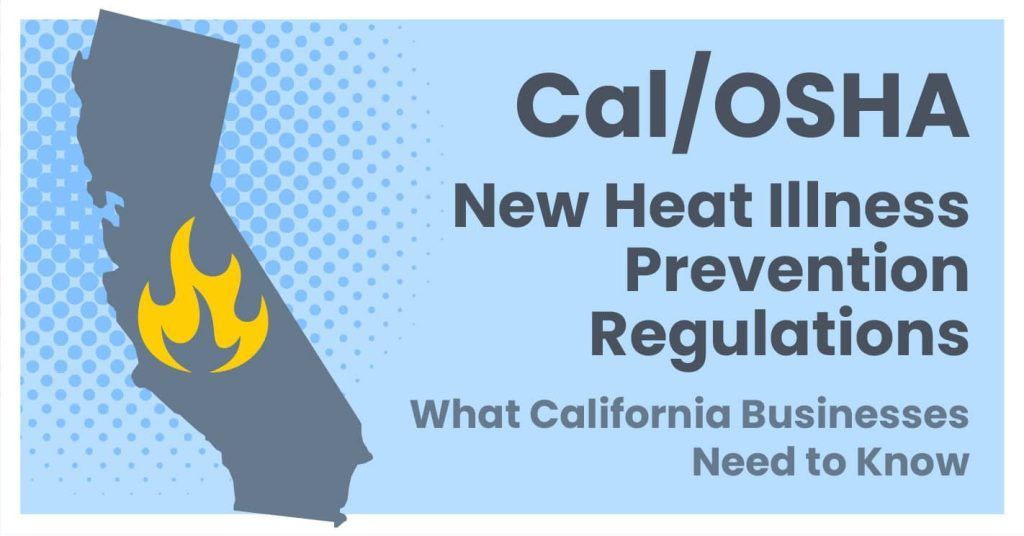Cal/OSHA’s New Heat Illness Prevention Regulations: What California Businesses Need to Know

Cal/OSHA’s New Heat Illness Prevention Regulations: What California Businesses Need to Know
On July 23, 2024, the Office of Administrative Law in California gave the green light to emergency regulations proposed by the California Division of Occupational Safety and Health, more commonly known as Cal/OSHA. These regulations are designed to enhance worker safety in extreme heat conditions and went into effect immediately. Here’s a breakdown of what these new requirements entail and how they impact California businesses.
Why the New Regulations?
California is known for its diverse climate, ranging from coastal cool breezes to intense inland heatwaves. As temperatures rise, especially during summer months, workers exposed to high heat conditions are at an increased risk for heat-related illnesses. To address these heat safety concerns, Cal/OSHA’s emergency regulations aim to bolster protections for employees working in hot environments.
Key Requirements Under the New Regulations
1. Heat Illness Prevention Plan
One of the core components of the new regulations is the requirement for a comprehensive Heat Illness Prevention Plan. California businesses must develop and implement this plan to ensure they are prepared to address heat-related risks. The plan should include strategies for managing heat exposure, providing access to shade and water, and procedures for responding to heat illness emergencies. This is a crucial step in creating a safer work environment for employees exposed to high temperatures.
2. Employee Training
Effective training is essential to mitigate heat risks. Under the new Cal/OSHA regulations, employers must provide their employees with training on the dangers of heat illness, preventive measures, and the appropriate actions to take if symptoms occur. This training should be tailored to the specific heat risks associated with the employees’ work environments, ensuring that all staff are equipped with the knowledge they need to stay safe.
3. Temperature Monitoring and Recordkeeping
For workplaces where temperatures exceed 87 degrees Fahrenheit, particularly if employees are wearing clothing that restricts heat removal or are exposed to radiant heat sources, temperature monitoring becomes critical. The new regulations mandate regular temperature checks and recordkeeping to track heat conditions accurately. This data helps employers assess the risk levels and implement necessary measures to protect their workforce.
4. Administrative and Engineering Controls
When temperatures surpass 82 degrees Fahrenheit, employers must employ both administrative and engineering controls to manage heat exposure. Administrative controls may include adjusting work schedules to avoid peak heat hours, while engineering controls could involve modifying work environments to reduce heat accumulation. These measures are designed to proactively manage heat stress and ensure that working conditions remain safe.
Implementing the Regulations
Compliance with these new Cal/OSHA regulations requires a proactive approach. California businesses should start by reviewing and updating their existing Heat Illness Prevention Plans. Ensuring that training programs are comprehensive and up-to-date is also essential. Additionally, setting up systems for temperature monitoring and integrating both administrative and engineering controls will help maintain compliance and safeguard employees.
The approval of these emergency regulations reflects California’s commitment to enhancing workplace safety in extreme heat conditions. By adhering to these new requirements, businesses can contribute to a safer and healthier working environment, ultimately benefiting both employees and the organization as a whole.
The immediate implementation of these Cal/OSHA regulations emphasizes the urgent need for California businesses to address heat-related risks effectively. By focusing on prevention, training, and proactive controls, employers can ensure they meet California workplace safety regulation requirements and protect their workforce from heat-related illnesses. Staying informed and prepared will not only help in compliance but also in fostering a culture of safety and well-being in the workplace.
Need help with your Heat Illness Prevention Plan? Sign up on YellowBird today!


